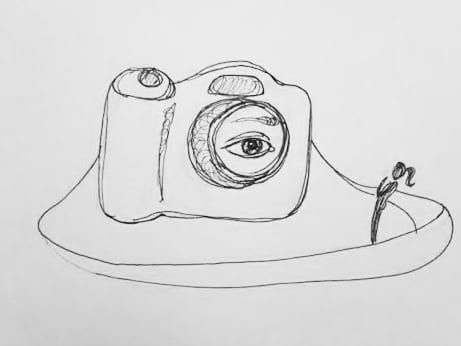
The Tumblr blog “Women Who Eat on Tubes” perfectly captures the cultural climate at the moment – it speaks to our increasing belief that we can use the internet to invade people’s privacy without consequences. While this blog and others like it are meant for entertainment and are not created with malicious intent, they break down the barriers that separate public from private, capitalizing on our culture’s belief that one person’s moment of weakness is everyone’s business.
Apart from the fact that this blog takes pictures of people at a vulnerable moment – while they wolf down food on the subway – it also focuses only on women, turning what may have been a topical look at our society’s commute-driven culture into objectification. The last thing these women want is for their picture to be taken during their commute, when they are simply trying to get where they need to be and not necessarily thinking about their appearance.
If the photographer were to ask these women’s permission to take these pictures, they would almost certainly refuse him. This should act as a hint that maybe running this blog is not the best use of his time, and instead he should focus on pursuits that have actual cultural value.
The same can even be said for the campus Facebook group “St. Olaf Snores,” although this blog does not invade people’s privacy on quite the same level as “Women Who Eat on Tubes.” “St. Olaf Snores” asks for submissions from friends of sleeping Oles. At least these pictures are not being taken by complete strangers.
In a perfect world, these pictures would all be taken with consent, but that is not the world we live in. With celebrities being photographed every waking minute by paparazzi who post the pictures to the Internet and encourage public commentary, our generation has been taught that taking funny and unflattering pictures of total strangers is an acceptable practice.
However good the intentions, though, it is undeniable that taking these pictures can result in embarrassment as well as the deliberate humiliation of their subjects. Further, these photos cannot be defended as “art” – the pictures on “Women Who Eat on Tubes” are blurry, low quality and obviously taken surreptitiously so as not to be noticed and called out. Actual works of art are noticeable because of their high quality and their being taken with consent, which imbues them with cultural value and a sense of purpose.
Should we continue to approve of this practice, our culture will only become more and more invasive. One particularly aggravating picture on “Women Who Eat on Tubes” shows three women eating in a row with the caption “Three little pigs.” While hopefully meant lightheartedly, this caption perfectly encapsulates the current online mentality that posting something automatically removes the poster from blame, making the words or pictures untouchable. This kind of thinking needs to be stopped.
While our generation’s dependence on technology has its benefits – we are more adept at fast communication, we can find information at a moment’s notice, we are good at multi-tasking – the dangers created by this dependence are displayed in questionable pursuits like the creation of these blogs. If we want to prove to our parents’ generation that we are not selfish, oblivious and dependent, then we must challenge these bloggers to pursue different passions, ones that speak to our unique abilities and strengths.
As Oles, we should set a good example by refusing to condone these blogs and instead encourage positive images like the ones captured on “Humans of St. Olaf,” which shows that our online voice is not all bad. Instead, it highlights our strengths rather than laughing at our vulnerabilities.
Nina Hagen ’14 hagen@stolaf.edu is from St. Paul, Minn. She majors in English.
Graphic Credit: ALLI LIVINGSTON/MANITOU MESSENGER

